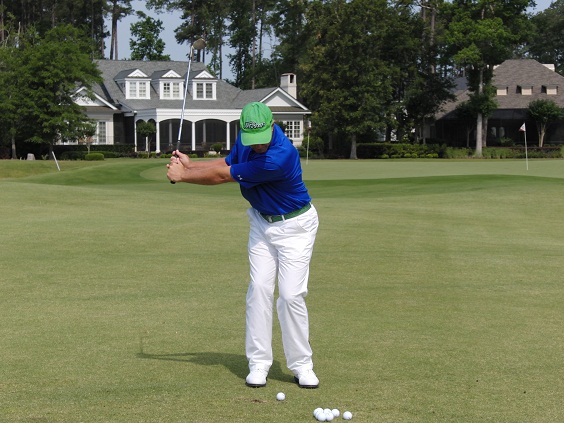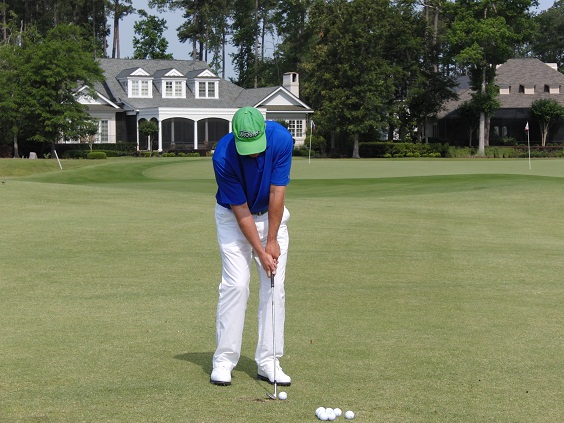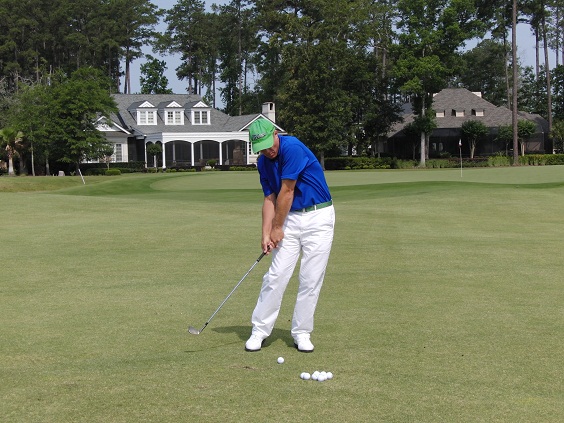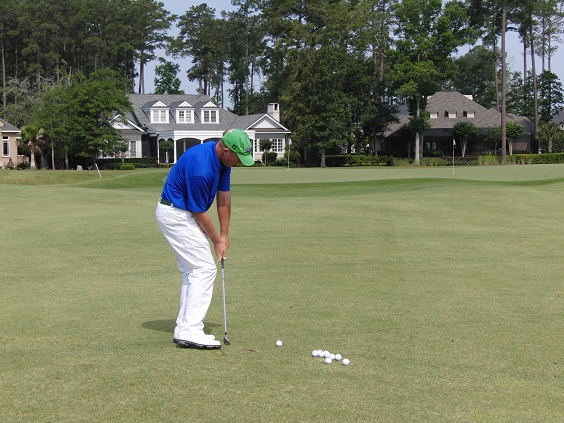How To Stop Chunking the Ball!
/One of the most demoralizing, confidence sapping shots a golfer can hit is the dreaded chunk! Or fat! Or heavy shot! Whatever name it goes by, this unfortunate experience will deplete any measure of confidence you might have had. I have had quite a few of you come to me and ask for an article addressing this so here it is. While I have used pictures referring to pitching please know that all of the points mentioned below apply wholly to the full swing as well.
I find that while there are many reasons as to why a golfer might be contacting the ground before the club gets to the ball the following four points are certainly the lead candidates....
Here the weight tends to get too far back in the backswing due to either lateral slide or sway in the upper body or just simply setting up with the weight too far back. As a result there is no time to get it forward by the time impact occurs and the club bottoms out before it gets to the ball.
or just simply setting up with the weight too far back. As a result there is no time to get it forward by the time impact occurs and the club bottoms out before it gets to the ball.
- An excellent drill to aid with this tendency is to practice the towel drill. It involves folding a towel and laying it on the ground 10-12 inches behind the ball. The towel encourages the weight to stay more centered at address and in the backswing, thus shifting the low point of the swing up to a few inches in front of the ball - which means ball first, divot second!
In this situation the ball is 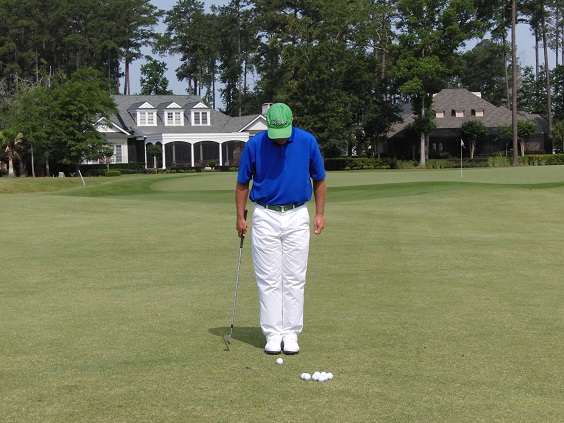 simply placed too far forward in the stance. The more forward the ball is the more difficult it is get your weight in front - notice I said weight and not head - of the ball. If your stance tends to get too open then you very well could have the ball too far forward. In order to strike the ball first here you would need to really slide the upper body forward.
simply placed too far forward in the stance. The more forward the ball is the more difficult it is get your weight in front - notice I said weight and not head - of the ball. If your stance tends to get too open then you very well could have the ball too far forward. In order to strike the ball first here you would need to really slide the upper body forward.
- A good check point to make sure you're not doing this is to simply start your address by placing your feet together with the ball centered between them (as pictured). Now take a step with either foot and match the size of the step with the other foot - the ball is now in the correct position and you are fully capable of striking it before the ground.
In this example the ball position is good, the body pivots back correctly, but there is simply no unwind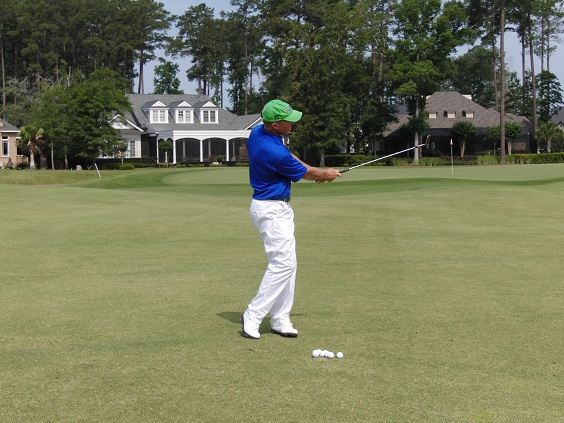 through the hit. The chest turns back and away from the target, but never gets around to it on the way through impact. As a result the onus of squaring the face is placed on the hand action (flipping) and any lag is lost. The hands early release and throw the clubhead into the ball at impact, often sticking the clubhead into the ground.
through the hit. The chest turns back and away from the target, but never gets around to it on the way through impact. As a result the onus of squaring the face is placed on the hand action (flipping) and any lag is lost. The hands early release and throw the clubhead into the ball at impact, often sticking the clubhead into the ground.
- A feel to get that body moving is to make sure the chest clears aggressively through impact. David Leadbetter always said that an active body leads to passive hands and this is what you're after. Keep the body unwinding through the hit and you'll start to maintain your lag and compress the ball.
Here the club approaches the ball too far from the inside - it is under the plane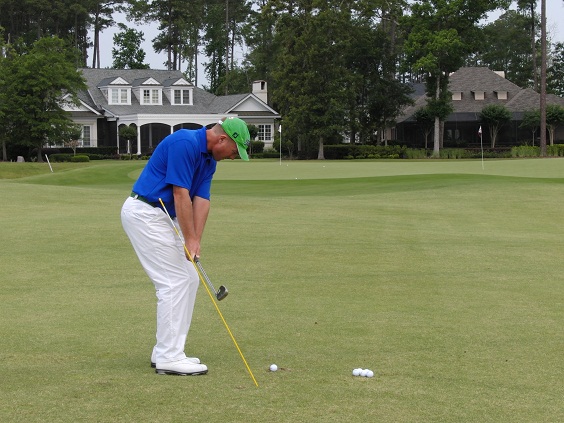 . This very often occurs due to a backswing that takes the arms and club too far to the inside. Due to the fact that the club is under plane, the tendency is for the hit to be too shallow. The club will often brush the turf before contact and create havoc with the clubface and your timing.
. This very often occurs due to a backswing that takes the arms and club too far to the inside. Due to the fact that the club is under plane, the tendency is for the hit to be too shallow. The club will often brush the turf before contact and create havoc with the clubface and your timing.
- An excellent drill (see picture) to improve not only your ball striking, but also your directional control is to make use of an alignment rod that is pegged in the ground at the same angle as the shaft at address. The rod should be 2 feet outside your back foot and just under the shaft at address. Now make swings (slowly at first!) to get a sense for what you need to do to get the club on plane and really start striking the ball beautifully.


